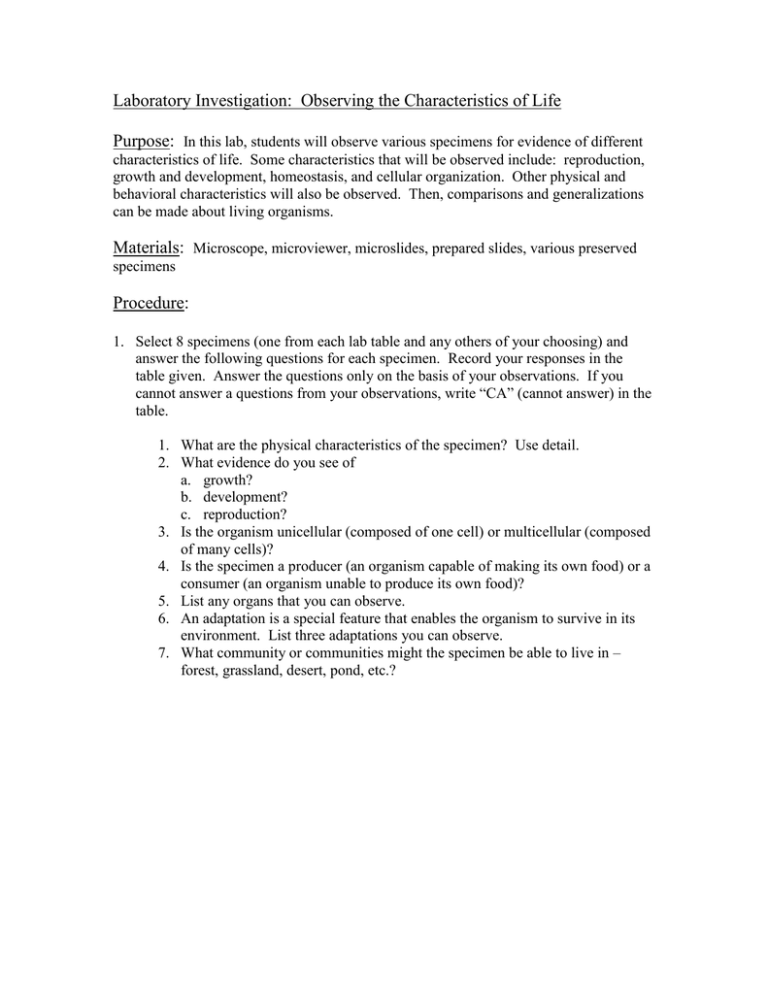Observing Characteristics of Life: Lab Investigation
advertisement

Laboratory Investigation: Observing the Characteristics of Life Purpose: In this lab, students will observe various specimens for evidence of different characteristics of life. Some characteristics that will be observed include: reproduction, growth and development, homeostasis, and cellular organization. Other physical and behavioral characteristics will also be observed. Then, comparisons and generalizations can be made about living organisms. Materials: Microscope, microviewer, microslides, prepared slides, various preserved specimens Procedure: 1. Select 8 specimens (one from each lab table and any others of your choosing) and answer the following questions for each specimen. Record your responses in the table given. Answer the questions only on the basis of your observations. If you cannot answer a questions from your observations, write “CA” (cannot answer) in the table. 1. What are the physical characteristics of the specimen? Use detail. 2. What evidence do you see of a. growth? b. development? c. reproduction? 3. Is the organism unicellular (composed of one cell) or multicellular (composed of many cells)? 4. Is the specimen a producer (an organism capable of making its own food) or a consumer (an organism unable to produce its own food)? 5. List any organs that you can observe. 6. An adaptation is a special feature that enables the organism to survive in its environment. List three adaptations you can observe. 7. What community or communities might the specimen be able to live in – forest, grassland, desert, pond, etc.? Analysis: You have just completed a series of observations of living things. Some of the specimens were probably familiar to you; others were not. Your collected data now becomes important because you can formulate generalizations about the specimens. Answer the following questions about your observations of the specimens. 1. Which one of the above questions was most difficult to answer on the basis of your observations? Why? 2. Which questions were the least difficult to answer? Why? 3. How many of the observed specimens can probably live in more than one community? List them. 4. What adaptations make it possible for them to live in more than one community? 5. Give an example of an adaptation that you observed and explain how it helps the organism survive (besides any mentioned in #4). 6. What feature helped you identify the specimen as a producer or consumer? 7. Describe what evidence for growth and development looked like in a specimen. 8. Describe what evidence for reproduction looked like in an organism. 9. Describe what evidence for response to the environment looked like in an organism. 10. Define life based on your observations.





